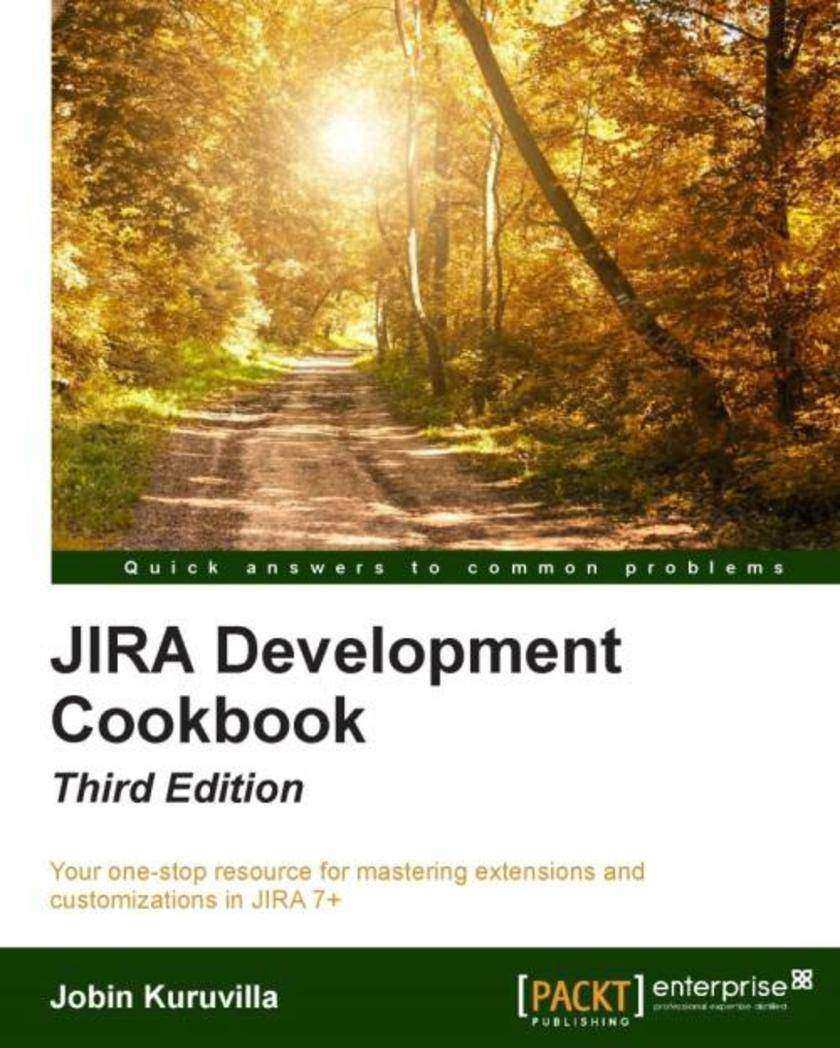
JIRA Development Cookbook - Third Edition
¥107.90
Your one-stop resource for mastering extensions and customizations in JIRA 7+ About This Book Explore the new features of JIRA 7 and best practices for agile development and integration with development tools Customize the look and feel of your JIRA UI to match your specific user needs Create seamless reports that make sense of your data through easy-to-use techniques Who This Book Is For If you are a JIRA developer or administrator, or a project manager who wants to fully exploit the exciting capabilities of JIRA, then this is the perfect book for you. What You Will Learn Create and deploy your own JIRA plugins Manipulate workflows to transform JIRA into a user-friendly system Create custom reports that show statistics for particular people, projects, versions, or other fields within issues Simplify reporting by writing your own JIRA gadgets, which can be added into a user's dashboard Master database handling by extending and retrieving custom field details from the database Deal with custom fields on an issue and program custom field option In Detail JIRA provides issue and project tracking for software development teams to improve code quality and the speed of development. With the new version of JIRA, you can create your own JIRA plugins and customize the look and feel of your JIRA UI easier than ever. JIRA Development Cookbook , Third Edition, is a one-stop resource to master extensions and customizations in JIRA. This book starts with recipes about simplifying the plugin development process followed by recipes dedicated to the plugin framework. Then, you will move on to writing custom field plugins to create new field types or custom searchers. You will also learn how to program and customize workflows to transform JIRA into a user-friendly system. With so much data spanning different projects, issues, and so on, we will cover how to work on reports and gadgets to get customized data according to our needs. At the end of the book, you will learn how to customize JIRA by adding new tabs, menus, and web items; communicate with JIRA via the REST APIs; and work with the JIRA database. Style and approach The most unique aspect of this book is its approach. This book is recipe-based, with real-world examples, that will empower you to implement agile processes and explore the exciting capabilities of Jira.
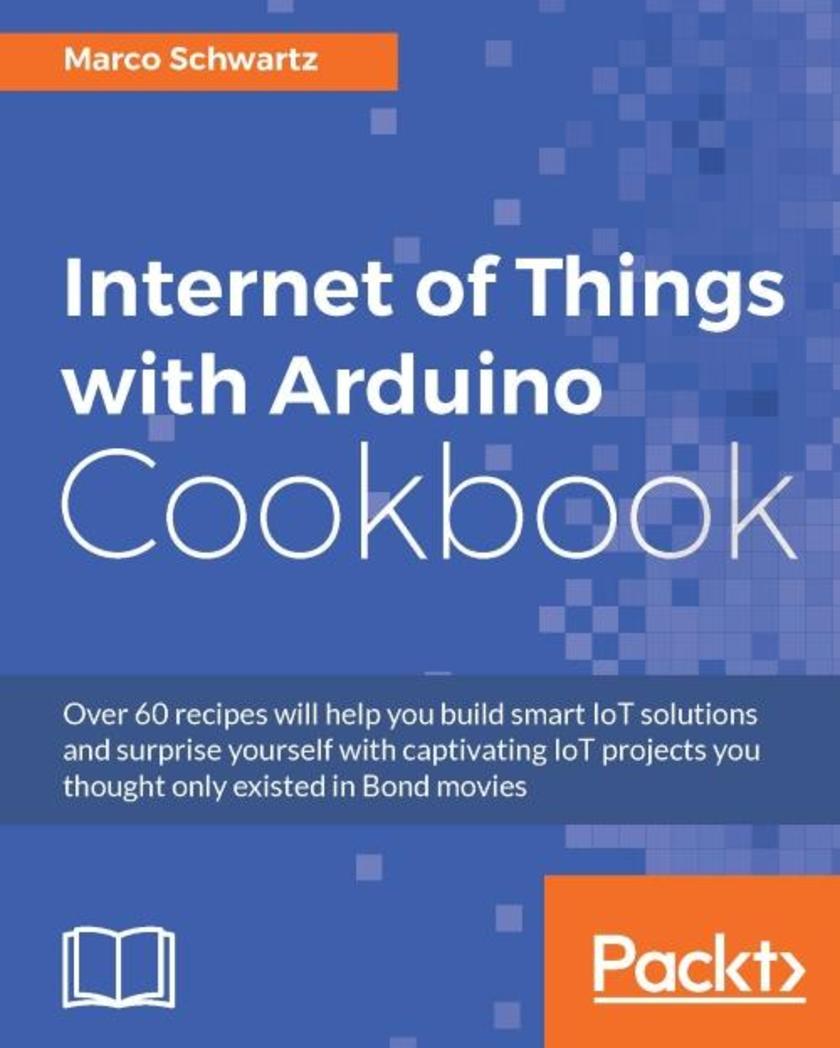
Internet of Things with Arduino Cookbook
¥63.21
Over 60 recipes will help you build smart IoT solutions and surprise yourself with captivating IoT projects you thought only existed in Bond movies About This Book This book offers key solutions and advice to address the hiccups faced when working on Arduino-based IoT projects in the real world Take your existing skills and capabilities to the next level by building challenging IoT applications with ease. Be the tech disruptor you always wanted to be with key recipes that help you solve Arduino IoT related problems smarter and faster. Put IoT to work through recipes on building Arduino-based devices that take control of your home, health, and life! Who This Book Is For This book is primarily for tech enthusiasts and early IoT adopters who would like to make the most of IoT and address the challenges encountered while developing IoT-based applications with Arduino. This book is also good for developers with basic electronics knowledge who need help to successfully build Arduino projects. What You Will Learn Monitor several Arduino boards simultaneously Tweet sensor data directly from your Arduino board Post updates on your Facebook wall directly from your Arduino board Create an automated access control with a fingerprint sensor Control your entire home from a single dashboard Make a GPS tracker that you can track in Google Maps Build a live camera that streams directly from your robot In Detail Arduino is a powerful and very versatile platform used by millions of people around the world to create DIY electronics projects. It can be connected to a wide variety of sensors and other components, making it the ideal platform to build amazing Internet of Things (IoT) projects on—the next wave in the era of computing. This book takes a recipe-based approach, giving you precise examples on how to build IoT projects of all types using the Arduino platform. You will come across projects from several fields, including the popular robotics and home automation domains. Along with being introduced to several forms of interactions within IoT, including projects that directly interact with well-known web services such as Twitter, Facebook, and Dropbox we will also focus on Machine-to-Machine (M2M) interactions, where Arduino projects interact without any human intervention. You will learn to build a few quick and easy-to-make fun projects that will really expand your horizons in the world of IoT and Arduino. Each chapter ends with a troubleshooting recipe that will help you overcome any problems faced while building these projects. By the end of this book, you will not only know how to build these projects, but also have the skills necessary to build your own IoT projects in the future. Style and approach This book takes a recipe-based approach, giving you precise examples on how to build IoT projects using the Arduino platform. You will learn to build fun and easy projects through a task-oriented approach.
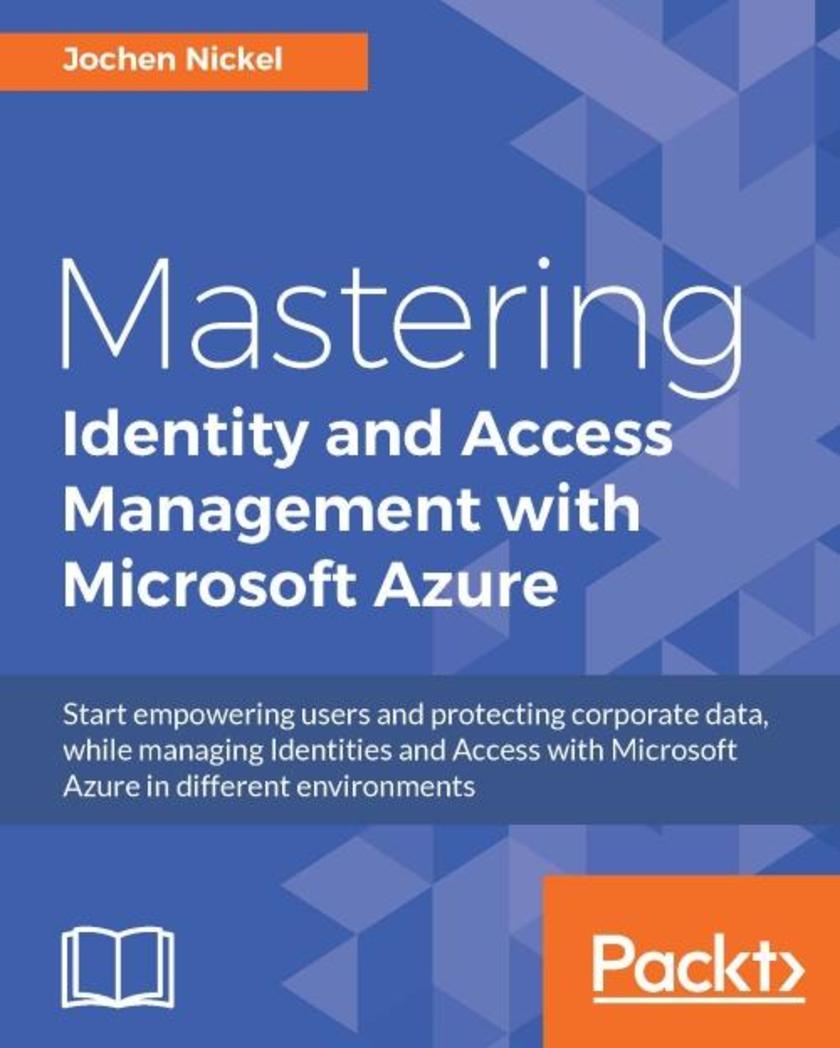
Mastering Identity and Access Management with Microsoft Azure
¥107.90
Start empowering users and protecting corporate data, while managing Identities and Access with Microsoft Azure in different environments About This Book Deep dive into the Microsoft Identity and Access Management as a Service (IDaaS) solution Design, implement and manage simple and complex hybrid identity and access management environments Learn to apply solution architectures directly to your business needs and understand how to identify and manage business drivers during transitions Who This Book Is For This book is for business decision makers, IT consultants, and system and security engineers who wish to plan, design, and implement Identity and Access Management solutions with Microsoft Azure. What You Will Learn Apply technical de*ions and solution architectures directly to your business needs and deployments Identify and manage business drivers and architecture changes to transition between different scenarios Understand and configure all relevant Identity and Access Management key features and concepts Implement simple and complex directory integration, authentication, and authorization scenarios Get to know about modern identity management, authentication, and authorization protocols and standards Implement and configure a modern information protection solution Integrate and configure future improvements in authentication and authorization functionality of Windows 10 and Windows Server 2016 In Detail Microsoft Azure and its Identity and Access Management is at the heart of Microsoft’s Software as a Service, including Office 365, Dynamics CRM, and Enterprise Mobility Management. It is an essential tool to master in order to effectively work with the Microsoft Cloud. Through practical, project based learning this book will impart that mastery. Beginning with the basics of features and licenses, this book quickly moves on to the user and group lifecycle required to design roles and administrative units for role-based access control (RBAC). Learn to design Azure AD to be an identity provider and provide flexible and secure access to SaaS applications. Get to grips with how to configure and manage users, groups, roles, and administrative units to provide a user- and group-based application and self-service access including the audit functionality. Next find out how to take advantage of managing common identities with the Microsoft Identity Manager 2016 and build cloud identities with the Azure AD Connect utility. Construct blueprints with different authentication scenarios including multi-factor authentication. Discover how to configure and manage the identity synchronization and federation environment along with multi -factor authentication, conditional access, and information protection scenarios to apply the required security functionality. Finally, get recommendations for planning and implementing a future-oriented and sustainable identity and access management strategy. Style and approach A practical, project-based learning experience explained through hands-on examples.
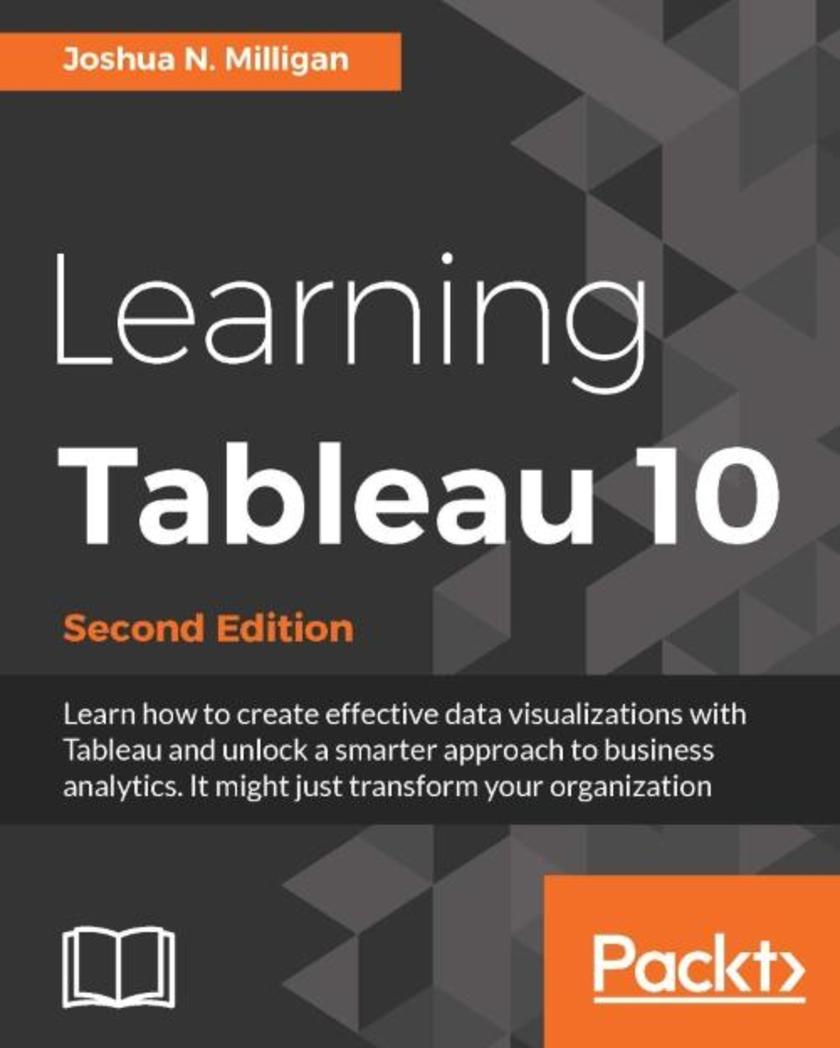
Learning Tableau 10 - Second Edition
¥99.18
Learn how to create effective data visualizations with Tableau and unlock a smarter approach to business analytics. It might just transform your organization About This Book Create stylish visualizations and dashboards that explain complexity with clarity Learn effective data storytelling to transform how your business uses ideas and makes decisions Explore all the new features in Tableau 10 and start to redefine what business analytics means to your organization Who This Book Is For Got dataNot sure what to make of itThis is the guide for you – whether you’ve been working with Tableau for years or are just beginning your adventure into business analytics. What You Will Learn Find out how to build effective visualizations and dashboards Prepare and clean your data so you can be sure Tableau is finding answers to your questions – not raising more problems Discover how to create advanced visualizations that explain complexity with clarity and style Dig deeper into your data with clustering and distribution models that allow you to analyze trends and make forecasts Learn how to use data storytelling to aid decision-making and strategy Share dashboards and visualizations to cultivate a culture where data is available and valued In Detail Tableau has for some time been one of the most popular Business Intelligence and data visualization tools available. WhyBecause, quite simply, it’s a tool that’s responsive to the needs of modern businesses. But it’s most effective when you know how to get what you want from it – it might make your business intelligent, but it isn’t going to make you intelligent… We’ll make sure you’re well prepared to take full advantage of Tableau 10’s new features. Whether you’re an experienced data analyst that wants to explore 2016’s new Tableau, or you’re a beginner that wants to expand their skillset and bring a more professional and sharper approach to their organization, we’ve got you covered. Beginning with the fundamentals, such as data preparation, you’ll soon learn how to build and customize your own data visualizations and dashboards, essential for high-level visibility and effective data storytelling. You’ll also find out how to so trend analysis and forecasting using clustering and distribution models to inform your analytics. But it’s not just about you – when it comes to data it’s all about availability and access. That’s why we’ll show you how to share your Tableau visualizations. It’s only once insights are shared and communicated that you – and your organization – will start making smarter and informed decisions. And really, that’s exactly what this guide is for. Style and approach Practical yet comprehensive, this Tableau guide takes you from the fundamentals of the tool before diving deeper into creating advanced visualizations. Covering the latest features found in Tableau 10, this might be the guide that transforms your organization.
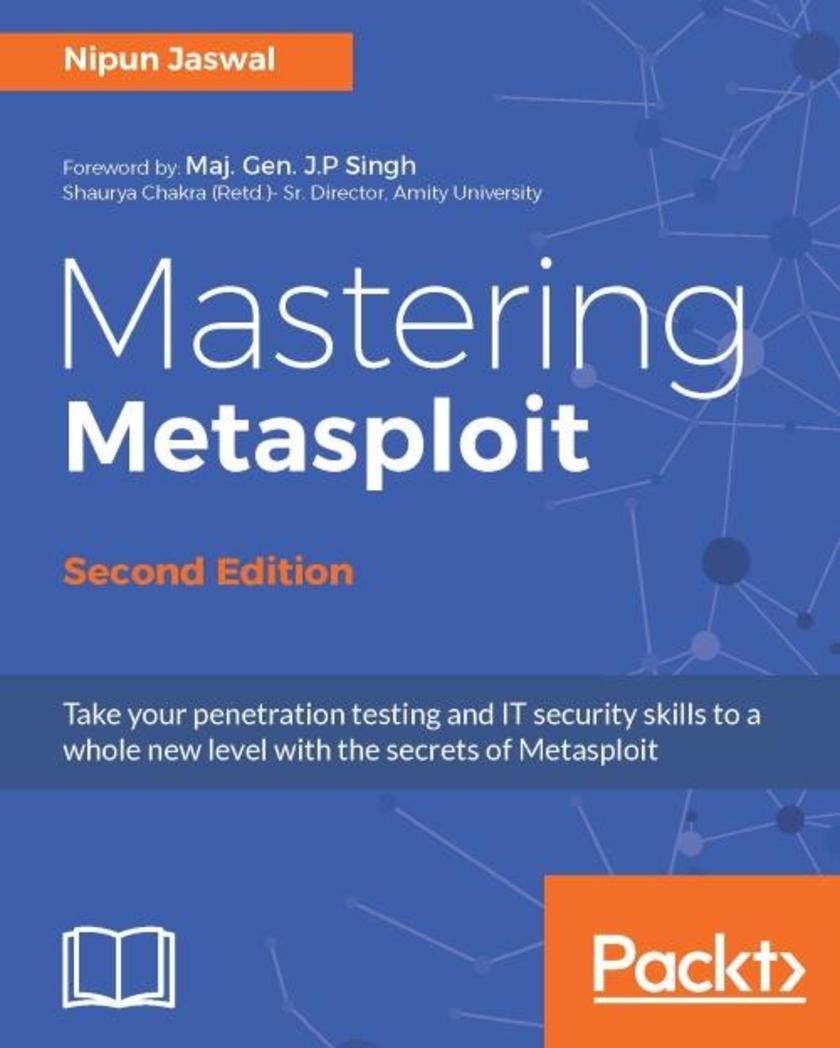
Mastering Metasploit - Second Edition
¥90.46
Take your penetration testing and IT security skills to a whole new level with the secrets of Metasploit About This Book Gain the skills to carry out penetration testing in complex and highly-secured environments Become a master using the Metasploit framework, develop exploits, and generate modules for a variety of real-world scenarios Get this completely updated edition with new useful methods and techniques to make your network robust and resilient Who This Book Is For This book is a hands-on guide to penetration testing using Metasploit and covers its complete development. It shows a number of techniques and methodologies that will help you master the Metasploit framework and explore approaches to carrying out advanced penetration testing in highly secured environments. What You Will Learn Develop advanced and sophisticated auxiliary modules Port exploits from PERL, Python, and many more programming languages Test services such as databases, SCADA, and many more Attack the client side with highly advanced techniques Test mobile and tablet devices with Metasploit Perform social engineering with Metasploit Simulate attacks on web servers and systems with Armitage GUI Script attacks in Armitage using CORTANA *ing In Detail Metasploit is a popular penetration testing framework that has one of the largest exploit databases around. This book will show you exactly how to prepare yourself against the attacks you will face every day by simulating real-world possibilities. We start by reminding you about the basic functionalities of Metasploit and its use in the most traditional ways. You’ll get to know about the basics of programming Metasploit modules as a refresher, and then dive into carrying out exploitation as well building and porting exploits of various kinds in Metasploit. In the next section, you’ll develop the ability to perform testing on various services such as SCADA, databases, IoT, mobile, tablets, and many more services. After this training, we jump into real-world sophisticated scenarios where performing penetration tests are a challenge. With real-life case studies, we take you on a journey through client-side attacks using Metasploit and various *s built on the Metasploit framework. By the end of the book, you will be trained specifically on time-saving techniques using Metasploit. Style and approach This is a step-by-step guide that provides great Metasploit framework methodologies. All the key concepts are explained details with the help of examples and demonstrations that will help you understand everything you need to know about Metasploit.
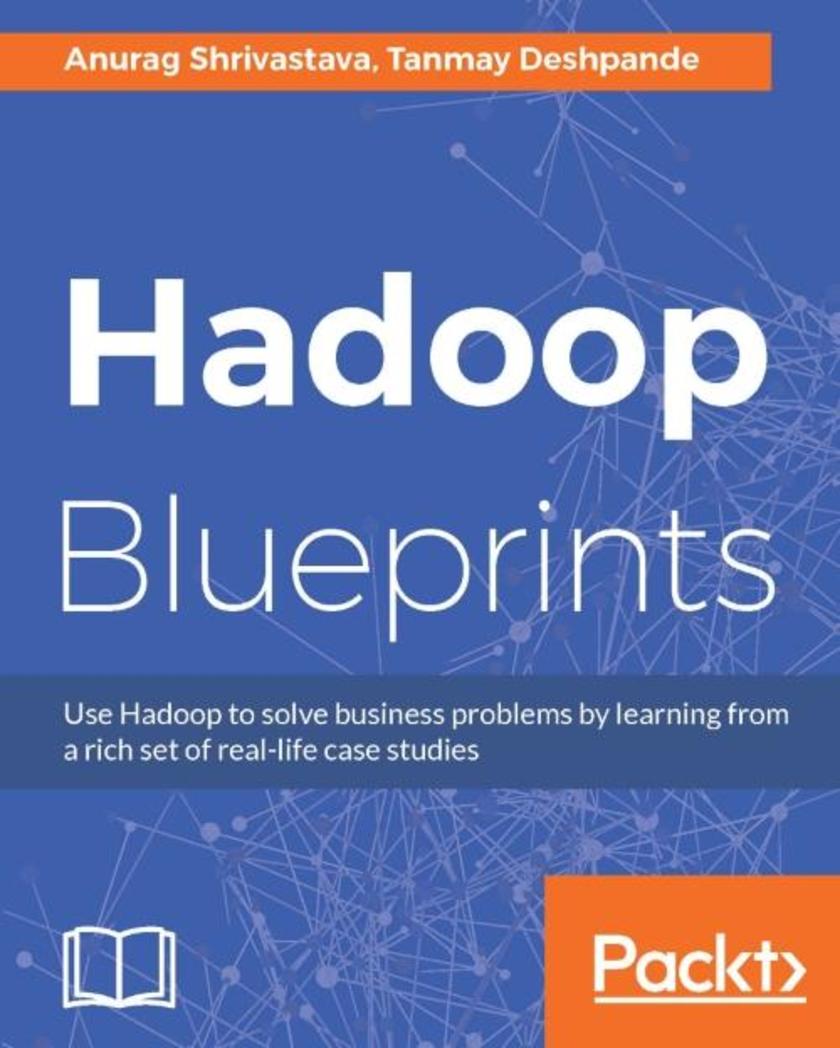
Hadoop Blueprints
¥80.65
Use Hadoop to solve business problems by learning from a rich set of real-life case studies About This Book Solve real-world business problems using Hadoop and other Big Data technologies Build efficient data lakes in Hadoop, and develop systems for various business cases like improving marketing campaigns, fraud detection, and more Power packed with six case studies to get you going with Hadoop for Business Intelligence Who This Book Is For If you are interested in building efficient business solutions using Hadoop, this is the book for you This book assumes that you have basic knowledge of Hadoop, Java, and any *ing language. What You Will Learn Learn about the evolution of Hadoop as the big data platform Understand the basics of Hadoop architecture Build a 360 degree view of your customer using Sqoop and Hive Build and run classification models on Hadoop using BigML Use Spark and Hadoop to build a fraud detection system Develop a churn detection system using Java and MapReduce Build an IoT-based data collection and visualization system Get to grips with building a Hadoop-based Data Lake for large enterprises Learn about the coexistence of NoSQL and In-Memory databases in the Hadoop ecosystem In Detail If you have a basic understanding of Hadoop and want to put your knowledge to use to build fantastic Big Data solutions for business, then this book is for you. Build six real-life, end-to-end solutions using the tools in the Hadoop ecosystem, and take your knowledge of Hadoop to the next level. Start off by understanding various business problems which can be solved using Hadoop. You will also get acquainted with the common architectural patterns which are used to build Hadoop-based solutions. Build a 360-degree view of the customer by working with different types of data, and build an efficient fraud detection system for a financial institution. You will also develop a system in Hadoop to improve the effectiveness of marketing campaigns. Build a churn detection system for a telecom company, develop an Internet of Things (IoT) system to monitor the environment in a factory, and build a data lake – all making use of the concepts and techniques mentioned in this book. The book covers other technologies and frameworks like Apache Spark, Hive, Sqoop, and more, and how they can be used in conjunction with Hadoop. You will be able to try out the solutions explained in the book and use the knowledge gained to extend them further in your own problem space. Style and approach This is an example-driven book where each chapter covers a single business problem and describes its solution by explaining the structure of a dataset and tools required to process it. Every project is demonstrated with a step-by-step approach, and explained in a very easy-to-understand manner.
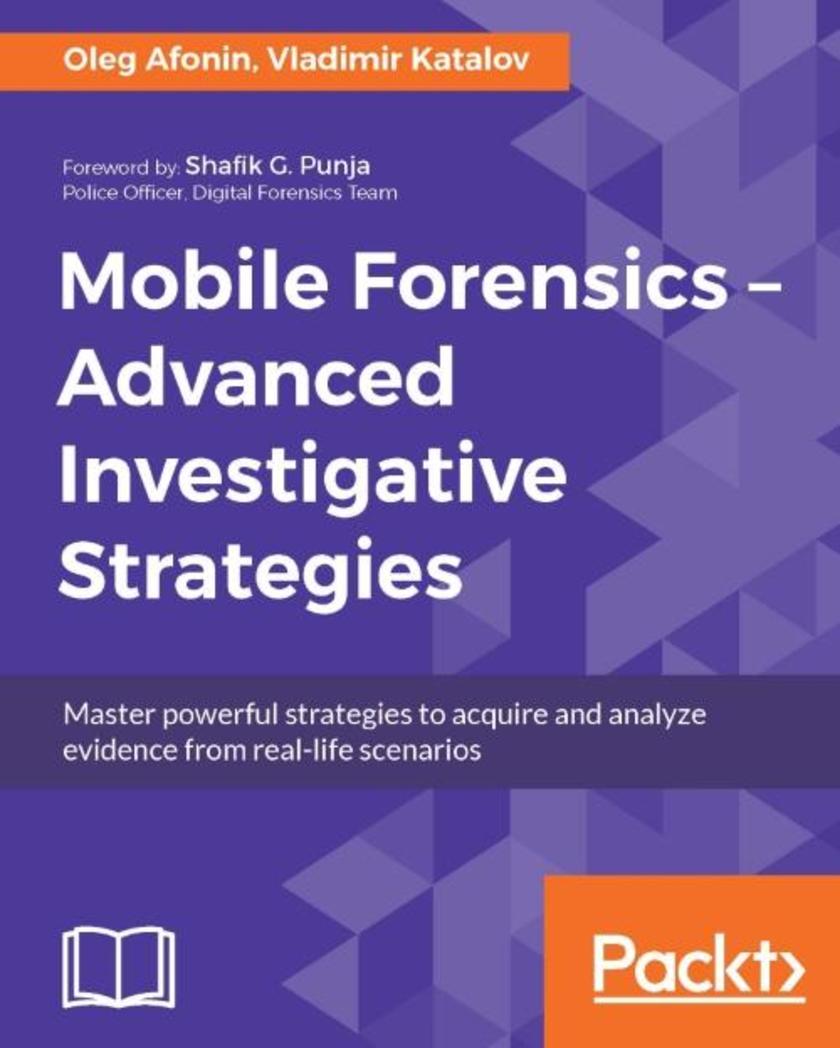
Mobile Forensics – Advanced Investigative Strategies
¥90.46
Master powerful strategies to acquire and analyze evidence from real-life scenarios About This Book A straightforward guide to address the roadblocks face when doing mobile forensics Simplify mobile forensics using the right mix of methods, techniques, and tools Get valuable advice to put you in the mindset of a forensic professional, regardless of your career level or experience Who This Book Is For This book is for forensic analysts and law enforcement and IT security officers who have to deal with digital evidence as part of their daily job. Some basic familiarity with digital forensics is assumed, but no experience with mobile forensics is required. What You Will Learn Understand the challenges of mobile forensics Grasp how to properly deal with digital evidence Explore the types of evidence available on iOS, Android, Windows, and BlackBerry mobile devices Know what forensic outcome to expect under given circumstances Deduce when and how to apply physical, logical, over-the-air, or low-level (advanced) acquisition methods Get in-depth knowledge of the different acquisition methods for all major mobile platforms Discover important mobile acquisition tools and techniques for all of the major platforms In Detail Investigating digital media is impossible without forensic tools. Dealing with complex forensic problems requires the use of dedicated tools, and even more importantly, the right strategies. In this book, you’ll learn strategies and methods to deal with information stored on smartphones and tablets and see how to put the right tools to work. We begin by helping you understand the concept of mobile devices as a source of valuable evidence. Throughout this book, you will explore strategies and "plays" and decide when to use each technique. We cover important techniques such as seizing techniques to shield the device, and acquisition techniques including physical acquisition (via a USB connection), logical acquisition via data backups, over-the-air acquisition. We also explore cloud analysis, evidence discovery and data analysis, tools for mobile forensics, and tools to help you discover and analyze evidence. By the end of the book, you will have a better understanding of the tools and methods used to deal with the challenges of acquiring, preserving, and extracting evidence stored on smartphones, tablets, and the cloud. Style and approach This book takes a unique strategy-based approach, executing them on real-world scenarios. You will be introduced to thinking in terms of "game plans," which are essential to succeeding in analyzing evidence and conducting investigations.
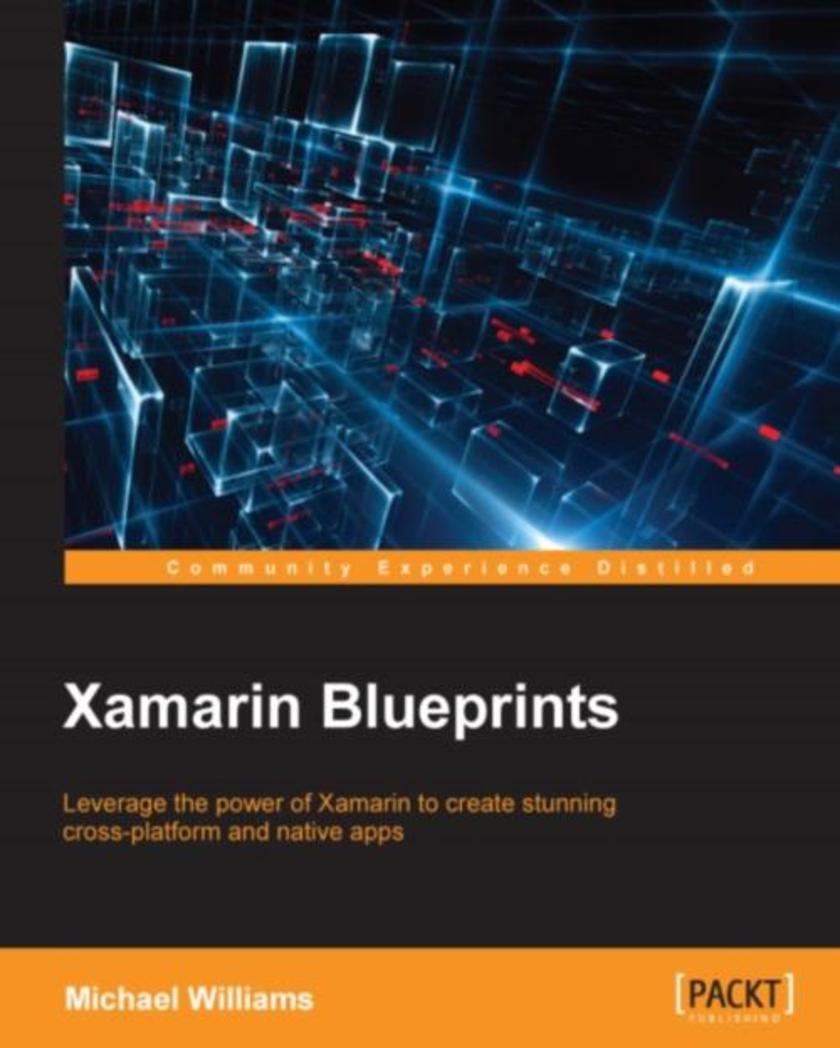
Xamarin Blueprints
¥99.18
Leverage the power of Xamarin to create stunning cross-platform and native apps About This Book Helps you get a clear practical understanding of creating professional-grade apps with Xamarin Covers Xamarin.Forms, Xamarin Android, and Xamarin iOS If you want to transform yourself from an amateur mobile developer into a professional app developer across multiple platforms, then this is the ideal book for you Who This Book Is For If you are a mobile developer looking to create interesting and fully featured apps for different platforms, then this book is the ideal solution for you. A basic knowledge of Xamarin and C# programming is assumed What You Will Learn Discover eight different ways to create your own Xamarin applications Improve app performance by using SQLite for data-intensive applications Set up a simple web service to feed JSON data into mobile applications Store files locally with Xamarin.Forms using dependency services Use Xamarin extension libraries to create effective applications with less coding In Detail Do you want to create powerful, efficient, and independent apps from scratch that will leverage the Xamarin framework and code with C#Well, look no further; you’ve come to the right place! This is a learn-as-you-build practical guide to building eight full-fledged applications using Xamarin.Forms, Xamarin Android, and Xamarin iOS. Each chapter includes a project, takes you through the process of building applications (such as a gallery Application, a text-to-speech service app, a GPS locator app, and a stock market app), and will show you how to deploy the application’s source code to a Google Cloud Source Repository. Other practical projects include a chat and a media-editing app, as well as other examples fit to adorn any developer’s utility belt. In the course of building applications, this book will teach you how to design and prototype professional-grade applications implementing performance and security considerations. Style and approach A project-based approach that will solve all your needs when it comes to creating native Android, iOS, and cross-platform apps efficiently and effectively.
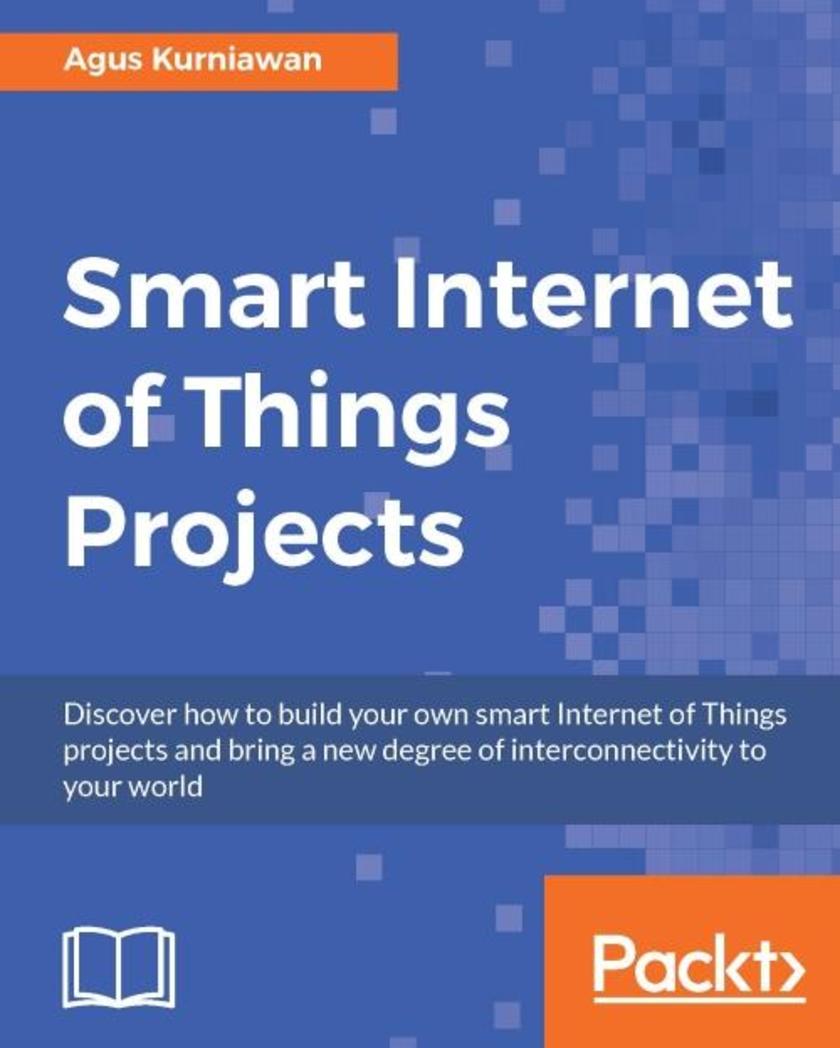
Smart Internet of Things Projects
¥71.93
Discover how to build your own smart Internet of Things projects and bring a new degree of interconnectivity to your world About This Book Learn how to extract and analyse data from physical devices and build smart IoT projects Master the skills of building enticing projects such as a neural network autonomous car, computer vision through a camera, and cloud-based IoT applications This project-based guide leverages revolutionary computing chips such as Raspberry Pi, Arduino, and so on Who This Book Is For If you are hobbyist who is keen on making smart IoT projects, then this book is for you. You should have a basic knowledge of Python. What You Will Learn Implement data science in your IoT projects and build a smart temperature controller Create a simple machine learning application and implement decision system concepts Develop a vision machine using OpenCV Build a robot car with manual and automatic control Implement speech modules with your own voice commands for IoT projects Connect IoT to a cloud-based server In Detail Internet of Things (IoT) is a groundbreaking technology that involves connecting numerous physical devices to the Internet and controlling them. Creating basic IoT projects is common, but imagine building smart IoT projects that can extract data from physical devices, thereby making decisions by themselves. Our book overcomes the challenge of analyzing data from physical devices and accomplishes all that your imagination can dream up by teaching you how to build smart IoT projects. Basic statistics and various applied algorithms in data science and machine learning are introduced to accelerate your knowledge of how to integrate a decision system into a physical device. This book contains IoT projects such as building a smart temperature controller, creating your own vision machine project, building an autonomous mobile robot car, controlling IoT projects through voice commands, building IoT applications utilizing cloud technology and data science, and many more. We will also leverage a small yet powerful IoT chip, Raspberry Pi with Arduino, in order to integrate a smart decision-making system in the IoT projects. Style and approach The book follows a project-based approach to building smart IoT projects using powerful boards such as the Raspberry Pi, Arduino, and the IoT chip.
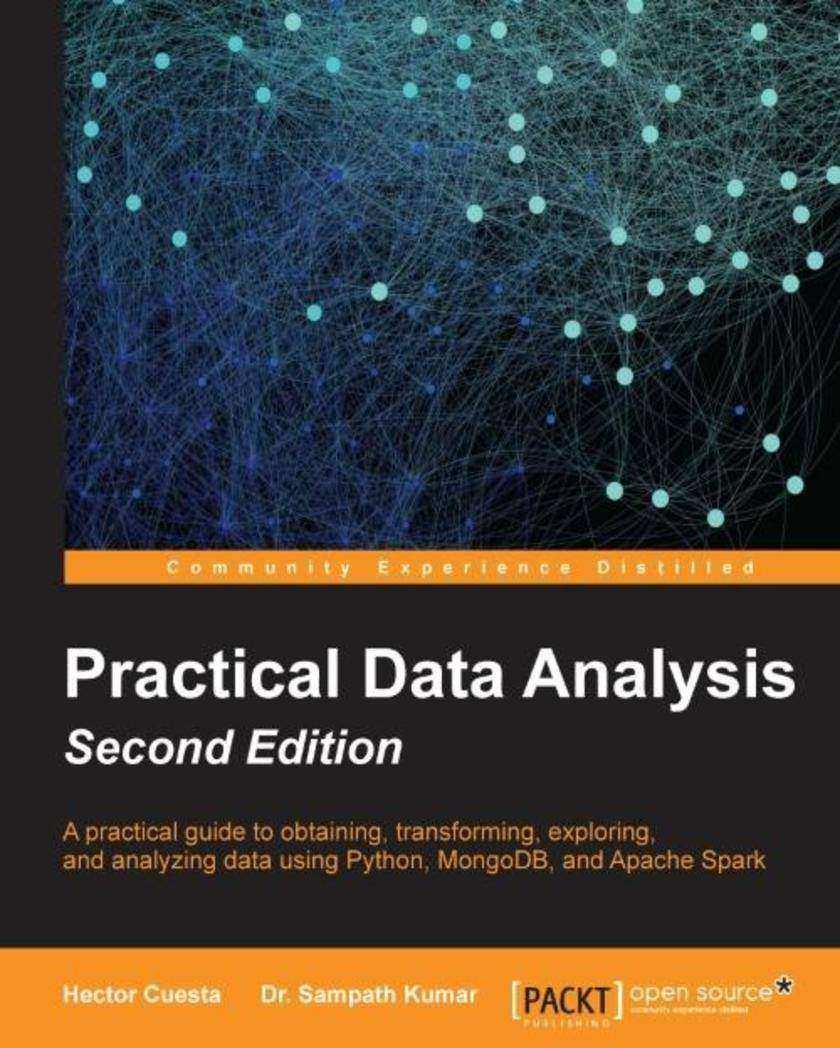
Practical Data Analysis - Second Edition
¥90.46
A practical guide to obtaining, transforming, exploring, and analyzing data using Python, MongoDB, and Apache Spark About This Book Learn to use various data analysis tools and algorithms to classify, cluster, visualize, simulate, and forecast your data Apply Machine Learning algorithms to different kinds of data such as social networks, time series, and images A hands-on guide to understanding the nature of data and how to turn it into insight Who This Book Is For This book is for developers who want to implement data analysis and data-driven algorithms in a practical way. It is also suitable for those without a background in data analysis or data processing. Basic knowledge of Python programming, statistics, and linear algebra is assumed. What You Will Learn Acquire, format, and visualize your data Build an image-similarity search engine Generate meaningful visualizations anyone can understand Get started with analyzing social network graphs Find out how to implement sentiment text analysis Install data analysis tools such as Pandas, MongoDB, and Apache Spark Get to grips with Apache Spark Implement machine learning algorithms such as classification or forecasting In Detail Beyond buzzwords like Big Data or Data Science, there are a great opportunities to innovate in many businesses using data analysis to get data-driven products. Data analysis involves asking many questions about data in order to discover insights and generate value for a product or a service. This book explains the basic data algorithms without the theoretical jargon, and you’ll get hands-on turning data into insights using machine learning techniques. We will perform data-driven innovation processing for several types of data such as text, Images, social network graphs, documents, and time series, showing you how to implement large data processing with MongoDB and Apache Spark. Style and approach This is a hands-on guide to data analysis and data processing. The concrete examples are explained with simple code and accessible data.
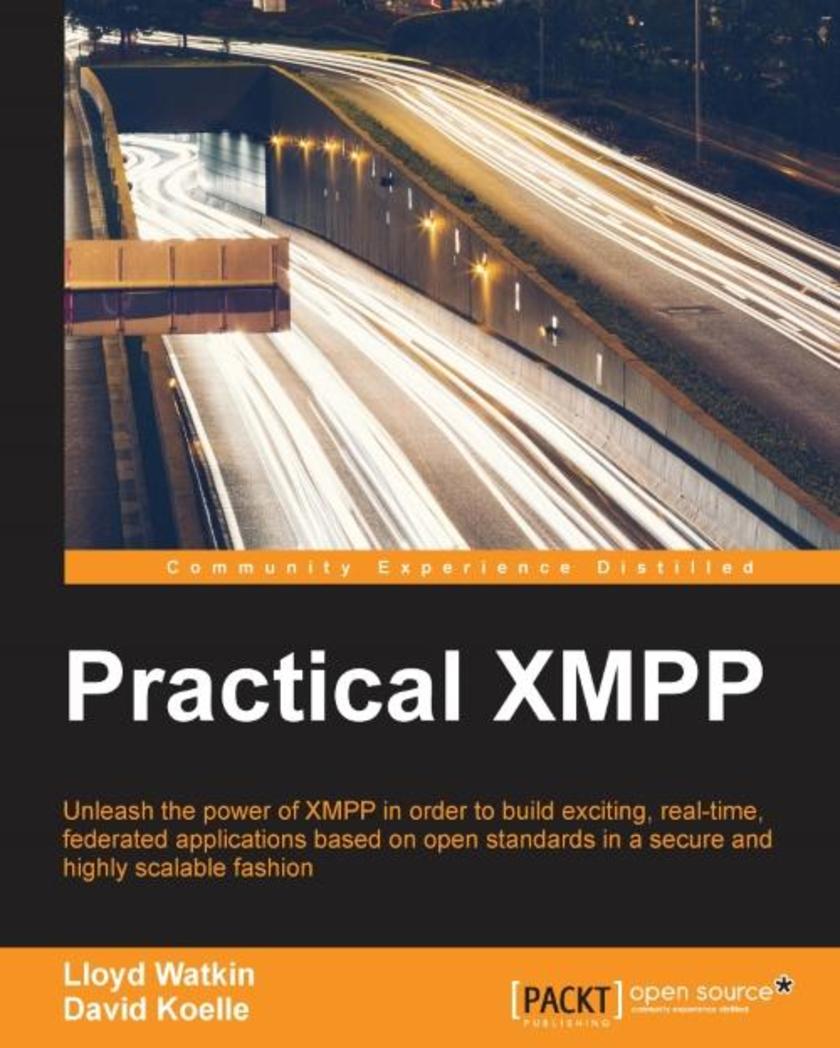
Practical XMPP
¥80.65
Unleash the power of XMPP in order to build exciting, real-time, federated applications based on open standards in a secure and highly scalable fashion About This Book Learn about the fundamentals of XMPP and be able to work with the core functionality both server-side and in the browser Build a simple 1-to-1 chat (the “Hello World” of XMPP), explore multi-user chat, publish subscribe systems, and work with a decentralized social network Author Lloyd Watkins is a member of the XMPP standards committee Who This Book Is For If you want to learn about the fundamentals of XMPP, be able to work with the core functionality both server-side and in the browser then this book is for you.No knowledge of XMPP is required, or of TCP/IP networking. It's important that you already know how to build applications of some form, and are looking get a better understanding of how to implement XMPP for one or more of its many uses. You should be interested in the decentralized web, know HTML, and likely know JavaScript and NodeJS. You will probably know JSON, and hopefully XML (this is the native output of XMPP). What You Will Learn Install and configure an XMPP server and use it to connect from a traditional desktop client and send a message Build a simple server-side application that will respond to messages from our logged in desktop client Install and run XMPP-FTW, connect to the server from the browser, and handle incoming/outgoing messages Connect to a multi-user chat room, send/receive stanzas, add a room password, join a protected room, set the room’s subject, and change a user's affiliation Get to grips with the publish-subscribe extension of XMPP and use it to build a pusher system that can make any website real-time Build a simple XMPP component and create an extension for XMPP-FTW that allows you to use your own custom format Build an XMPP version of the classic game “Pong” In Detail XMPP (eXtensible Messaging and Presence Protocol) is a messaging protocol that enables communication between two or more devices via the Internet. With this book, developers will learn about the fundamentals of XMPP, be able to work with the core functionality both server-side and in the browser, as well as starting to explore several of the protocol extensions. You will not only have a solid grasp of XMPP and how it works, but will also be able to use the protocol to build real-world applications that utilize the power of XMPP. By the end of this book, you will know more about networking applications in general, and have a good understanding of how to extend XMPP, as well as using it in sample applications. Style and approach Through a number of hands-on projects, this book shows you how to build usable applications that highlights a feature of XMPP.
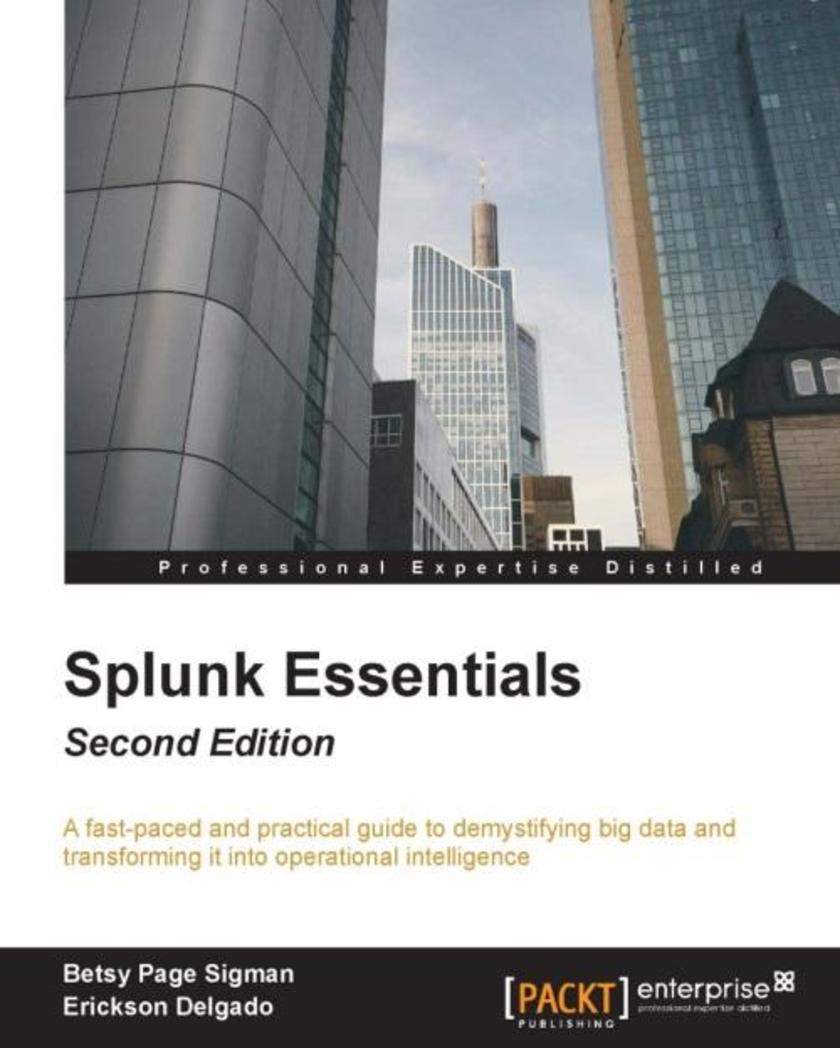
Splunk Essentials - Second Edition
¥71.93
A fast-paced and practical guide to demystifying big data and transforming it into operational intelligence About This Book Want to get started with Splunk to analyze and visualize machine dataOpen this book and step into the world of Splunk. Leverage the exceptional analysis and visualization capabilities to make informed decisions for your business This easy-to-follow, practical book can be used by anyone, even if you have never managed any data before Who This Book Is For This book will be perfect for you if you are a Software engineer or developer or System administrators or Business analyst who seek to correlate machine data with business metrics and provide intuitive real-time and statistical visualizations. Some knowledge or experience of previous versions of Splunk will be helpful but not essential. What You Will Learn Install and configure Splunk Gather data from different sources, isolate them by indexes, classify them into source types, and tag them with the essential fields Be comfortable with the Search Processing Language and get to know the best practices in writing search queries Create stunning and powerful dashboards Be proactive by implementing alerts and scheduled reports Use the Splunk SDK and integrate Splunk data into other applications Implement the best practices in using Splunk. In Detail Splunk is a search, analysis, and reporting platform for machine data, which has a high adoption on the market. More and more organizations want to adopt Splunk to use their data to make informed decisions. This book is for anyone who wants to manage data with Splunk. You’ll start with very basics of Splunk— installing Splunk—and then move on to searching machine data with Splunk. You will gather data from different sources, isolate them by indexes, classify them into source types, and tag them with the essential fields. After this, you will learn to create various reports, XML forms, and alerts. You will then continue using the Pivot Model to transform the data models into visualization. You will also explore visualization with D3 in Splunk. Finally you’ll be provided with some real-world best practices in using Splunk. Style and approach This fast-paced, example-rich guide will help you analyze and visualize machine data with Splunk through simple, practical instructions.

Raspberry Pi: Making Amazing Projects Right from Scratch!
¥135.15
Explore the powers of Raspberry Pi and build your very own projects right out of the box About This Book From robotics to gaming, this Learning Path will unlock your creativity! Build your own impressive IoT projects to transform your home Featuring some of Packt’s very best Raspberry Pi content, this Learning Path doesn’t just get you to your destination – it opens up a whole horizon of possibilities! Who This Book Is For Want new ideas for your next Raspberry Pi projectGot one lying around gathering dustThis Learning Path gets you straight into the creative dirty work of programming and playing with your pi. Whether your new to Raspberry Pi, or an experienced maker, we think this Learning Path will inspire you and get your creative juices flowing! What You Will Learn Discover an aweome range of Raspberry Pi projects Bridge the gap between software and hardware through your Pi and find out how to make an operating system interact with cameras and other hardware Find out how to use your Raspberry Pi for gaming Secure your home with this tiny computer! Make science fiction a reality – build a walking robot In Detail Looking for inspiration for your next Raspberry Pi projectNot sure where to beginThis Learning Path is the perfect place to begin, providing you with an accessible yet comprehensive journey through Raspberry Pi. Following three modules, you’ll soon be confident and prepared to get creative with your microcomputer. Raspberry Pi by Example is the first module in this Learning Path – and it does exactly what it says. It doesn’t just teach, it shows you how to go and build some awesome Raspberry Pi projects immediately. Build and play your own games with the Pi, build a complete Internet of Things home automation system that controls your house through Twitter… let your imagination run wild! In the next module we’ll look in more depth at building a home security system. You’ll be using some of the skills you devoped through the first module, but apply them to something more intricate and impressive. Using a Linux based operating system as the foundations, you’ll gradually build up an entire security infrastructure adding cameras, remote controls, and even intrusion alerts! In the final module, we’ll take you into the world of Raspberry Pi robotics. By the end of it, you’ll have built a biped robot that can interact with its environment! This Learning Path combines some of the best that Packt has to offer in one complete, curated package. It includes content from the following Packt products: Raspberry Pi By Example by Ashwin Pajankar and Arush Kakkar Building a Home Security System with Raspberry Pi by Matthew Pole Raspberry Pi Robotics Essentials by Richard Grimmett Style and approach It’s not every day you build a home automation system. It’s not every day you build a walking robot. But with this Learning Path you’ll do just that. So get started and let this tiny computer expand your imagination.
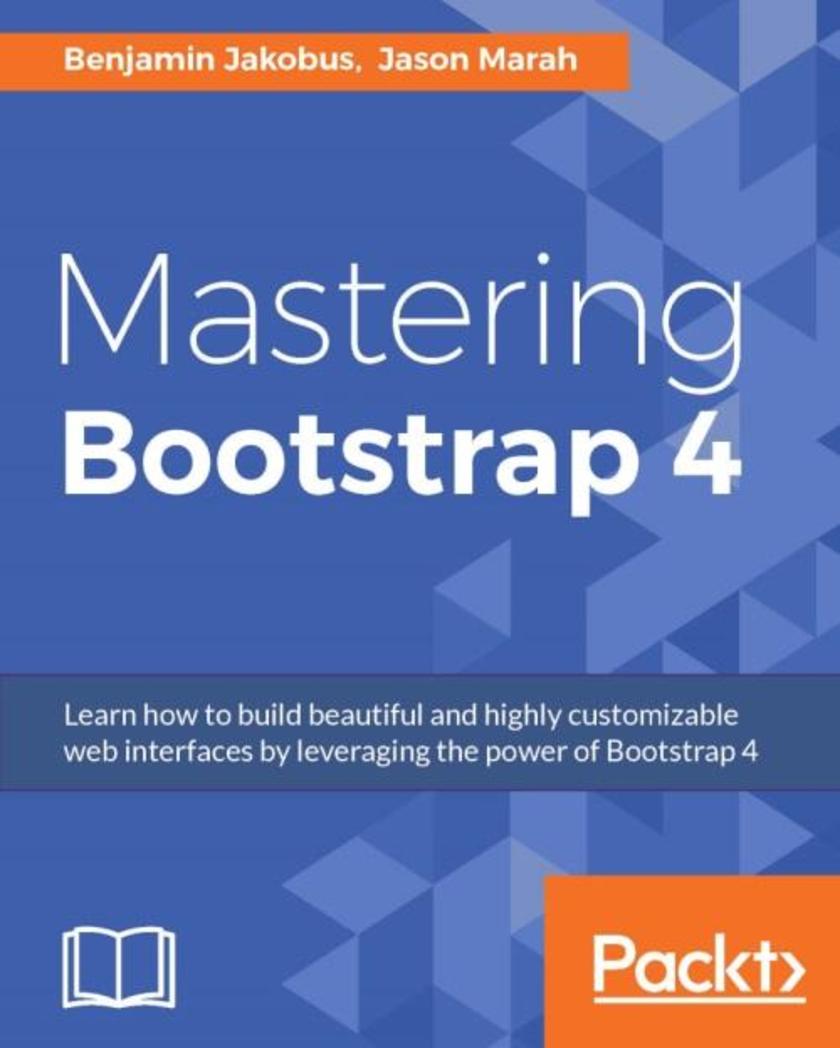
Mastering Bootstrap 4
¥80.65
Learn how to build beautiful and highly customizable web interfaces by leveraging the power of Bootstrap 4 About This Book Adapt and customize Bootstrap to produce enticing websites that fit your needs Explore Bootstrap's grid system, helper classes, and responsive utilities Extend Bootstrap with jQuery plugins and learn how to create your own custom plugins Who This Book Is For This book targets intermediate-level front-end web-developers. The book is not intended to be an introduction to web development. As such, the book assumes that readers have a firm grasp on the basic concepts behind web-development, as well as essential HTML, JavaScript and CSS skills. What You Will Learn Create a professional Bootstrap-based website from scratch without using third-party templates Apply the Bootstrap mobile-first grid system and add responsiveness and aesthetic touches to image elements Style various types of content and learn how to build a page’s layout from scratch by applying the power of Bootstrap 4 Take advantage of Bootstrap’s form helper and contextual classes Infuse your web pages with life and movement using Bootstrap jQuery plugins Customize the behavior and features of Bootstrap’s jQuery Plugins extensively Optimize your Bootstrap-based project before deployment Incorporate Bootstrap into an AngularJS or React application and use Bootstrap components as AngularJS directives or React components In Detail Bootstrap 4 is a free CSS and JavaScript framework that allows developers to rapidly build responsive web-interfaces. Right from the first chapter, dive into building a customized Bootstrap website from scratch. Get to grips with Bootstrap’s key features and quickly discover the various ways in which Bootstrap can help you develop web-interfaces. Then take walk through the fundamental features, such as its grid system, helper classes, and responsive utilities. When you have mastered these, you will discover how to structure page layouts, use forms, style different types of content and utilize Bootstrap’s various navigation components. Among other things, you will also tour the anatomy of a Bootstrap plugin, creating your own custom components and extending Bootstrap using jQuery. Finally, you will discover how to optimize your website and integrate it with third-party frameworks. By the end of this book, you will have a thorough knowledge of the framework’s ins and outs, and be able to build highly customizable and optimized web interfaces. Style and approach This comprehensive step-by-step guide walks you through building a complete website using Bootstrap 4. Each chapter is accompanied by source code and screenshots, and focuses on a distinct set of lessons that are illustrated within the context of a demo project.

Teaching with Google Classroom
¥80.65
Put Google Classroom to work while teaching your students and make your life easier About This Book This is the first book to guide educators step by step through teaching with Google Classroom It’s focused on you, your students, and providing great learning experiences easily It’s easy to follow, with everything you need to get started and keep going even if you’re not a technology fan Who This Book Is For This is a book for educators who want to use Google Classroom to teach better. It’s not for geeks. There are rich examples, clear instructions, and enlightening explanations to help you put this platform to work. What You Will Learn Create a Google Classroom and add customized information for each individual class Add students to a Google Classroom Send announcements and questions to students Create, distribute, collect, and grade assignments through Google Classroom Add events to and share a Google Classroom’s calendar with parents to track a student's progress Reuse posts, archive classrooms, and perform other administrative tasks in Google Classroom Use Google Docs Add-ons, and Google Chrome Webstore Apps and Extensions to enhance assignments Set up Google Classroom’s mobile app In Detail Google Classroom helps teachers bring their work online. According to Google Trends, it’s already bigger than Moodle after barely a year in the wild. This book is a complete start-to-finish guide for teachers using Google Classroom for the first time. It explains what Google Classroom is, what it can do, how to set it up, and how to use it to enhance student learning while making your life as a teacher easier. It shows you how to place resources and activities online, gather assignments, and develop group and individual activities. It’s not just a manual, you’ll also discover inspiring, easy ways to put Google Classroom to work for you and your class. Style and approach This is a step-by-step guide to using Google Classroom, the rapidly emerging platform for education, effectively.
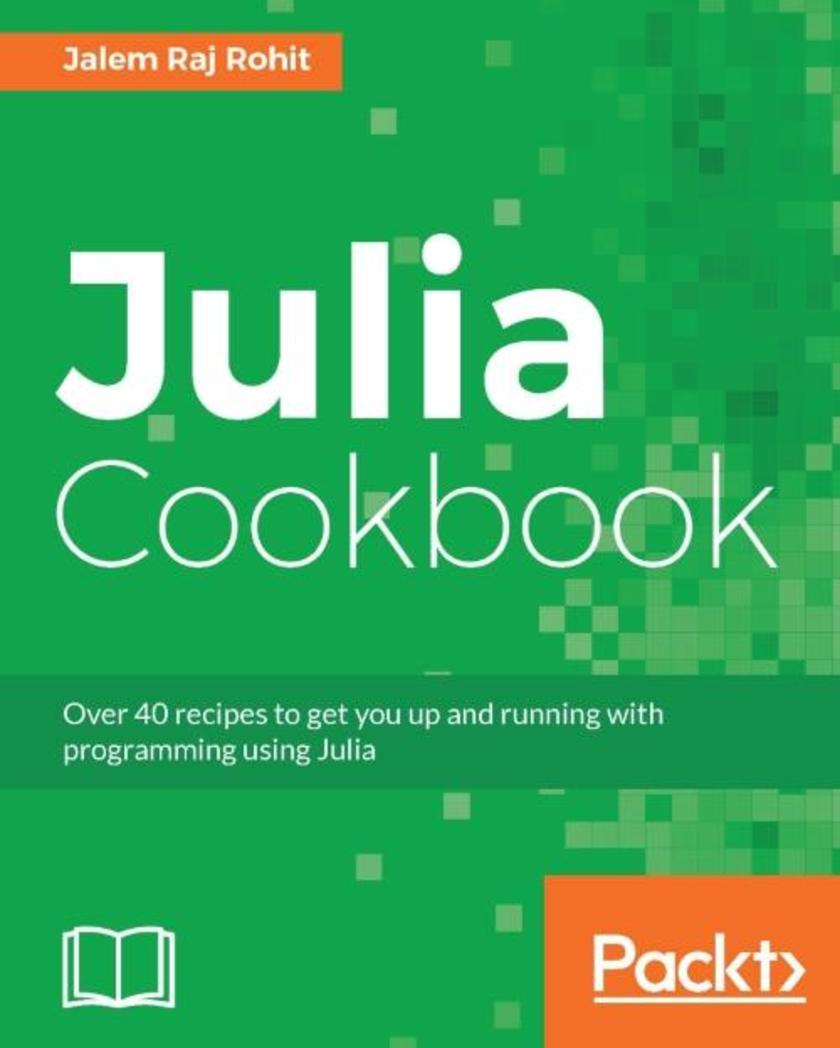
Julia Cookbook
¥71.93
Over 40 recipes to get you up and running with programming using Julia About This Book Follow a practical approach to learn Julia programming the easy way Get an extensive coverage of Julia’s packages for statistical analysis This recipe-based approach will help you get familiar with the key concepts in Juli Who This Book Is For This book is for data scientists and data analysts who are familiar with the basics of the Julia language. Prior experience of working with high-level languages such as MATLAB, Python, R, or Ruby is expected. What You Will Learn Extract and handle your data with Julia Uncover the concepts of metaprogramming in Julia Conduct statistical analysis with StatsBase.jl and Distributions.jl Build your data science models Find out how to visualize your data with Gadfly Explore big data concepts in Julia In Detail Want to handle everything that Julia can throw at you and get the most of it every dayThis practical guide to programming with Julia for performing numerical computation will make you more productive and able work with data more efficiently. The book starts with the main features of Julia to help you quickly refresh your knowledge of functions, modules, and arrays. We’ll also show you how to utilize the Julia language to identify, retrieve, and transform data sets so you can perform data analysis and data manipulation. Later on, you’ll see how to optimize data science programs with parallel computing and memory allocation. You’ll get familiar with the concepts of package development and networking to solve numerical problems using the Julia platform. This book includes recipes on identifying and classifying data science problems, data modelling, data analysis, data manipulation, meta-programming, multidimensional arrays, and parallel computing. By the end of the book, you will acquire the skills to work more effectively with your data. Style and approach This book has a recipe-based approach to help you grasp the concepts of Julia programming.
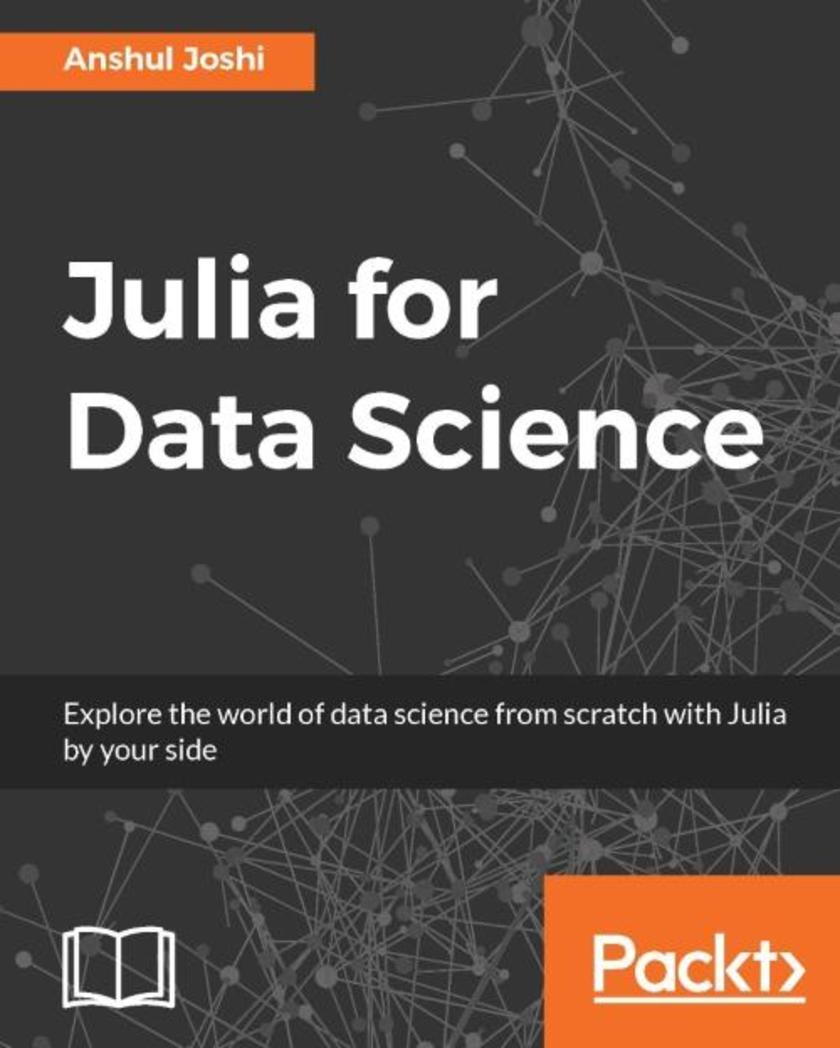
Julia for Data Science
¥90.46
Explore the world of data science from scratch with Julia by your side About This Book An in-depth exploration of Julia's growing ecosystem of packages Work with the most powerful open-source libraries for deep learning, data wrangling, and data visualization Learn about deep learning using Mocha.jl and give speed and high performance to data analysis on large data sets Who This Book Is For This book is aimed at data analysts and aspiring data scientists who have a basic knowledge of Julia or are completely new to it. The book also appeals to those competent in R and Python and wish to adopt Julia to improve their skills set in Data Science. It would be beneficial if the readers have a good background in statistics and computational mathematics. What You Will Learn Apply statistical models in Julia for data-driven decisions Understanding the process of data munging and data preparation using Julia Explore techniques to visualize data using Julia and D3 based packages Using Julia to create self-learning systems using cutting edge machine learning algorithms Create supervised and unsupervised machine learning systems using Julia. Also, explore ensemble models Build a recommendation engine in Julia Dive into Julia’s deep learning framework and build a system using Mocha.jl In Detail Julia is a fast and high performing language that's perfectly suited to data science with a mature package ecosystem and is now feature complete. It is a good tool for a data science practitioner. There was a famous post at Harvard Business Review that Data Scientist is the sexiest job of the 21st century. (https://hbr.org/2012/10/data-scientist-the-sexiest-job-of-the-21st-century). This book will help you get familiarised with Julia's rich ecosystem, which is continuously evolving, allowing you to stay on top of your game. This book contains the essentials of data science and gives a high-level overview of advanced statistics and techniques. You will dive in and will work on generating insights by performing inferential statistics, and will reveal hidden patterns and trends using data mining. This has the practical coverage of statistics and machine learning. You will develop knowledge to build statistical models and machine learning systems in Julia with attractive visualizations. You will then delve into the world of Deep learning in Julia and will understand the framework, Mocha.jl with which you can create artificial neural networks and implement deep learning. This book addresses the challenges of real-world data science problems, including data cleaning, data preparation, inferential statistics, statistical modeling, building high-performance machine learning systems and creating effective visualizations using Julia. Style and approach This practical and easy-to-follow yet comprehensive guide will get you learning about Julia with respect to data science. Each topic is explained thoroughly and placed in context. For the more inquisitive, we dive deeper into the language and its use case. This is the one true guide to working with Julia in data science.
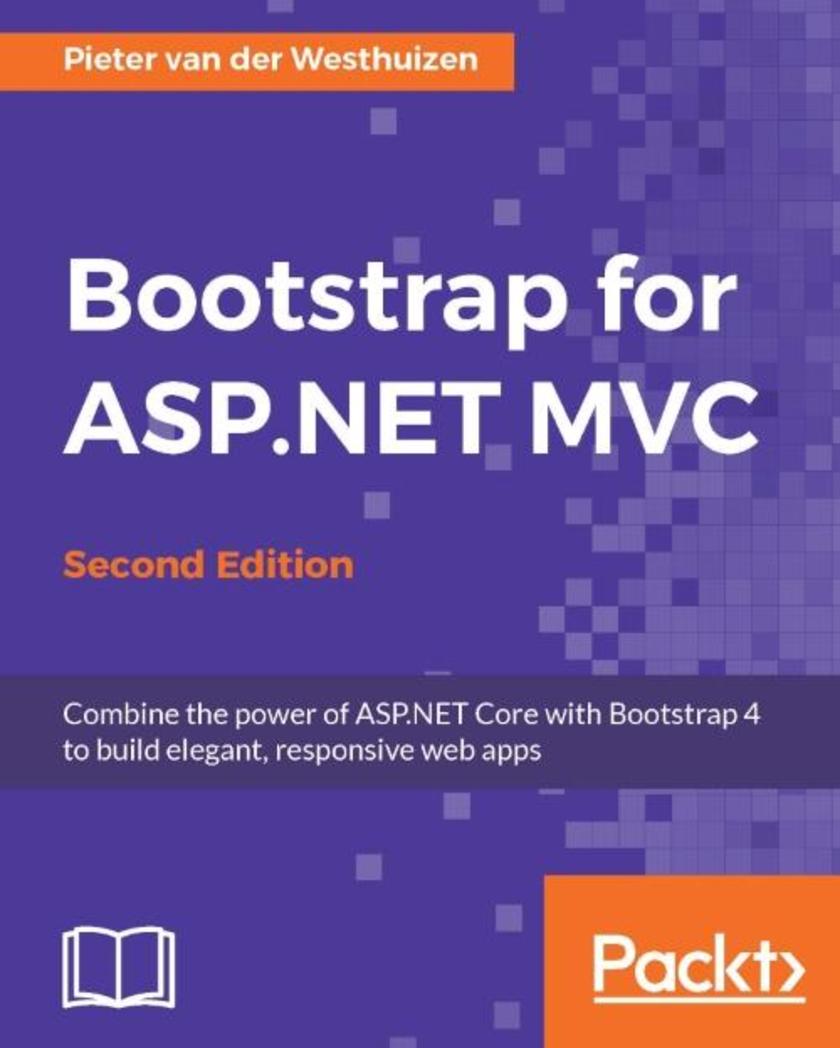
Bootstrap for ASP.NET MVC - Second Edition
¥71.93
Combine the power of ASP.NET Core with Bootstrap 4 to build elegant, responsive web apps About This Book Updated for Bootstrap 4 and ASP.Net MVC 6, this book shows how to take advantage of the latest new features introduced in both of these industry-leading frameworks Build responsive, mobile-ready apps by combining the power of ASP.NET MVC with Bootstrap Grasp the intricacies of Bootstrap and how to use it with ASP.NET MVC Build your own tools and helpers to assist you in creating ASP.NET MVC Bootstrap sites easily and quickly Master the use of Bootstrap components and plugins with ASP.NET MVC Who This Book Is For If you are an ASP.NET MVC developer and would like to know how to incorporate Bootstrap into your projects, then this book is invaluable to you. Developers with entry-level experience of ASP.NET MVC development and limited experience with Bootstrap will also benefit from this book. What You Will Learn Create a new ASP.NET MVC project that uses Bootstrap for its styling and learn how to include external libraries using the new package managers Learn to use the various Bootstrap CSS and HTML elements, and how to use the new Bootstrap 4 grid layout system Explore the different input groups and implement alerts, progress bars, and badges Explore JavaScript components by illustrating and walking through the process of using JavaScript/jQuery to add interactivity to Twitter Bootstrap components Build your own ASP.NET MVC helpers and tag helpers to reduce the amount of HTML needed to generate Bootstrap elements Convert a Bootstrap HTML template into a usable ASP.NET MVC project Use the jQuery DataTables plugin with Bootstrap and ASP.NET MVC In Detail One of the leading open source frontend frameworks, Bootstrap has undergone a significant change and introduced several features that make designing compelling, next-generation UIs much simpler. Integrating Bootstrap with ASP.NET's powerful components can further enhance its capabilities. This book guides you through the process of creating an ASP.NET MVC website from scratch using Bootstrap. After a primer on the fundamentals of Bootstrap, you will learn your way around and create a new ASP.NET MVC project in Visual Studio. You will move on to learn about the various Bootstrap components as well as techniques to include them in your own projects. The book includes practical examples to show you how to use open-source plugins with Bootstrap and ASP.NET MVC and guides you through building an ASP.NET MVC website using Bootstrap, utilizing layout and user-interface components. At the end of this book, you will find some valuable tips and tricks to help you get the most out of your Bootstrap-integrated and ASP.NET MVC-integrated website. Style and approach This is a compact, step-by-step guide that focuses on combining the power of Bootstrap with ASP.Net MVC to build next-generation web apps. With clear instructions, this book will show how to build a complete ASP.Net MVC-integrated web app from scratch using Bootstrap. It will also cover several tricks for integrating Bootstrap and ASP.Net MVC, and getting the most out of both frameworks.
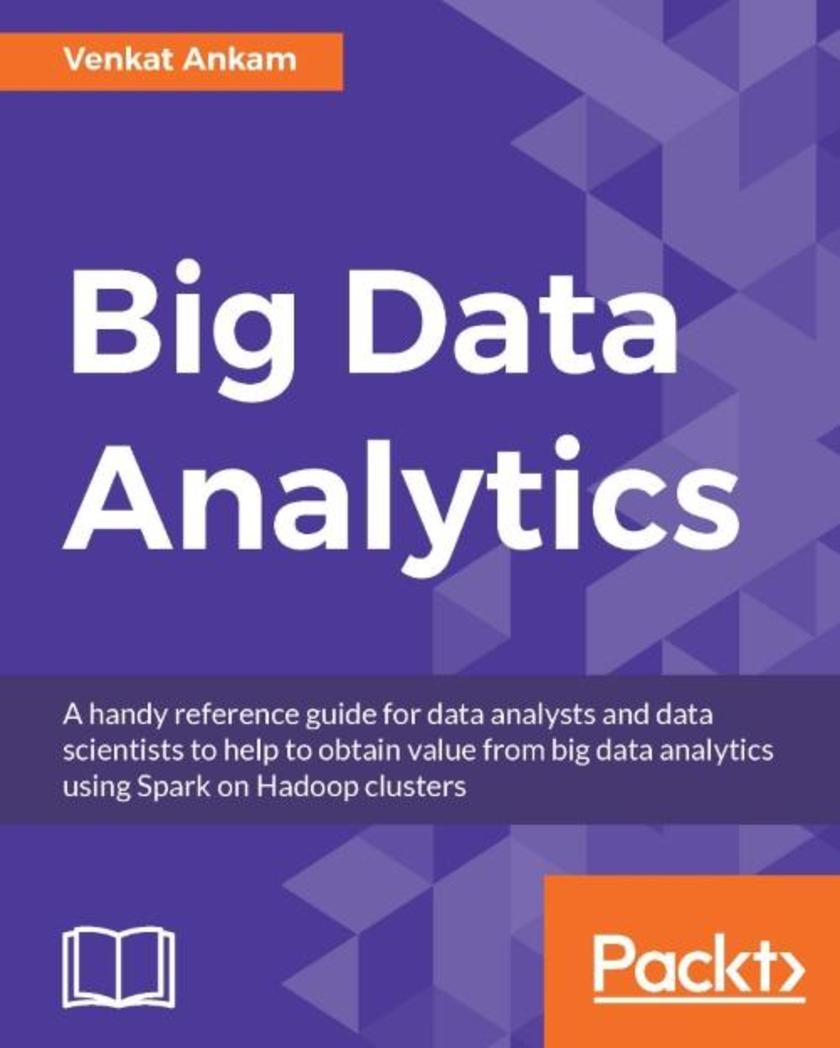
Big Data Analytics
¥90.46
A handy reference guide for data analysts and data scientists to help to obtain value from big data analytics using Spark on Hadoop clusters About This Book This book is based on the latest 2.0 version of Apache Spark and 2.7 version of Hadoop integrated with most commonly used tools. Learn all Spark stack components including latest topics such as DataFrames, DataSets, GraphFrames, Structured Streaming, DataFrame based ML Pipelines and SparkR. Integrations with frameworks such as HDFS, YARN and tools such as Jupyter, Zeppelin, NiFi, Mahout, HBase Spark Connector, GraphFrames, H2O and Hivemall. Who This Book Is For Though this book is primarily aimed at data analysts and data scientists, it will also help architects, programmers, and practitioners. Knowledge of either Spark or Hadoop would be beneficial. It is assumed that you have basic programming background in Scala, Python, SQL, or R programming with basic Linux experience. Working experience within big data environments is not mandatory. What You Will Learn Find out and implement the tools and techniques of big data analytics using Spark on Hadoop clusters with wide variety of tools used with Spark and Hadoop Understand all the Hadoop and Spark ecosystem components Get to know all the Spark components: Spark Core, Spark SQL, DataFrames, DataSets, Conventional and Structured Streaming, MLLib, ML Pipelines and Graphx See batch and real-time data analytics using Spark Core, Spark SQL, and Conventional and Structured Streaming Get to grips with data science and machine learning using MLLib, ML Pipelines, H2O, Hivemall, Graphx, SparkR and Hivemall. In Detail Big Data Analytics book aims at providing the fundamentals of Apache Spark and Hadoop. All Spark components – Spark Core, Spark SQL, DataFrames, Data sets, Conventional Streaming, Structured Streaming, MLlib, Graphx and Hadoop core components – HDFS, MapReduce and Yarn are explored in greater depth with implementation examples on Spark + Hadoop clusters. It is moving away from MapReduce to Spark. So, advantages of Spark over MapReduce are explained at great depth to reap benefits of in-memory speeds. DataFrames API, Data Sources API and new Data set API are explained for building Big Data analytical applications. Real-time data analytics using Spark Streaming with Apache Kafka and HBase is covered to help building streaming applications. New Structured streaming concept is explained with an IOT (Internet of Things) use case. Machine learning techniques are covered using MLLib, ML Pipelines and SparkR and Graph Analytics are covered with GraphX and GraphFrames components of Spark. Readers will also get an opportunity to get started with web based notebooks such as Jupyter, Apache Zeppelin and data flow tool Apache NiFi to analyze and visualize data. Style and approach This step-by-step pragmatic guide will make life easy no matter what your level of experience. You will deep dive into Apache Spark on Hadoop clusters through ample exciting real-life examples. Practical tutorial explains data science in simple terms to help programmers and data analysts get started with Data Science
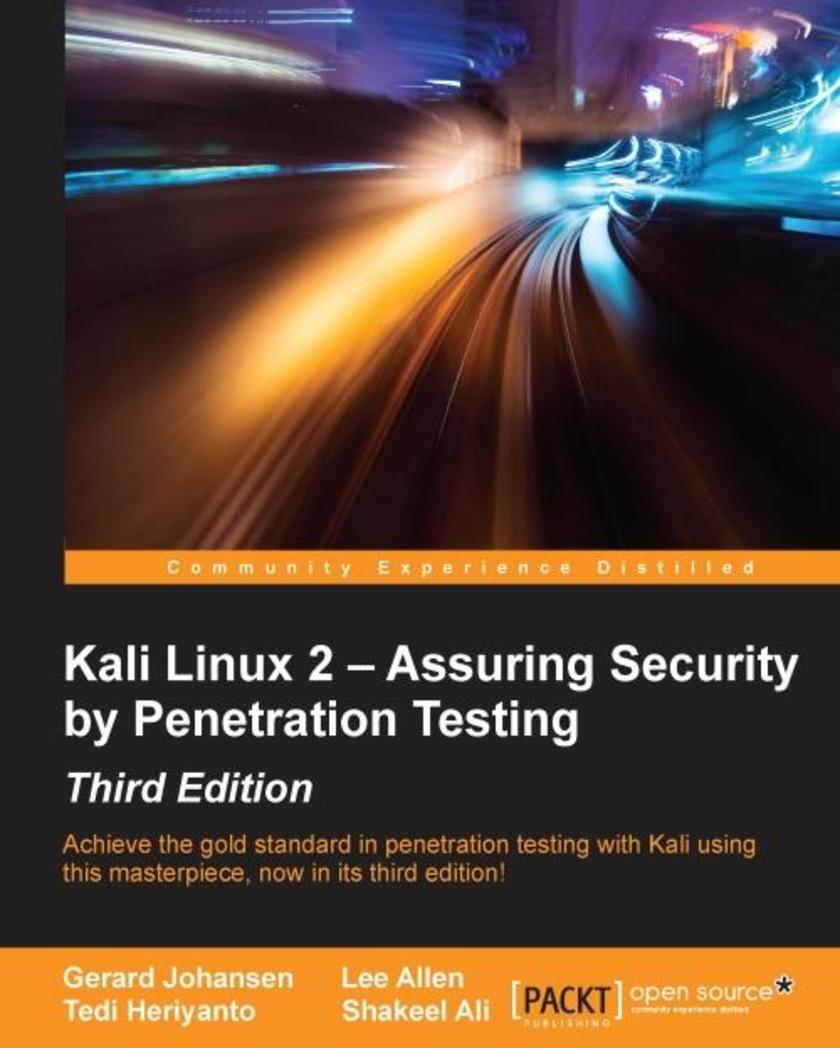
Kali Linux 2 – Assuring Security by Penetration Testing - Third Edition
¥80.65
Achieve the gold standard in penetration testing with Kali using this masterpiece, now in its third edition! About This Book Get a rock-solid insight into penetration testing techniques and test your corporate network against threats like never before Formulate your pentesting strategies by relying on the most up-to-date and feature-rich Kali version in town—Kali Linux 2 (aka Sana). Experience this journey with new cutting-edge wireless penetration tools and a variety of new features to make your pentesting experience smoother Who This Book Is For If you are an IT security professional or a student with basic knowledge of Unix/Linux operating systems, including an awareness of information security factors, and you want to use Kali Linux for penetration testing, this book is for you. What You Will Learn Find out to download and install your own copy of Kali Linux Properly scope and conduct the initial stages of a penetration test Conduct reconnaissance and enumeration of target networks Exploit and gain a foothold on a target system or network Obtain and crack passwords Use the Kali Linux NetHunter install to conduct wireless penetration testing Create proper penetration testing reports In Detail Kali Linux is a comprehensive penetration testing platform with advanced tools to identify, detect, and exploit the vulnerabilities uncovered in the target network environment. With Kali Linux, you can apply appropriate testing methodology with defined business objectives and a scheduled test plan, resulting in a successful penetration testing project engagement. Kali Linux – Assuring Security by Penetration Testing is a fully focused, structured book providing guidance on developing practical penetration testing skills by demonstrating cutting-edge hacker tools and techniques with a coherent, step-by-step approach. This book offers you all of the essential lab preparation and testing procedures that reflect real-world attack scenarios from a business perspective, in today's digital age. Style and approach This practical guide will showcase penetration testing through cutting-edge tools and techniques using a coherent, step-by-step approach.
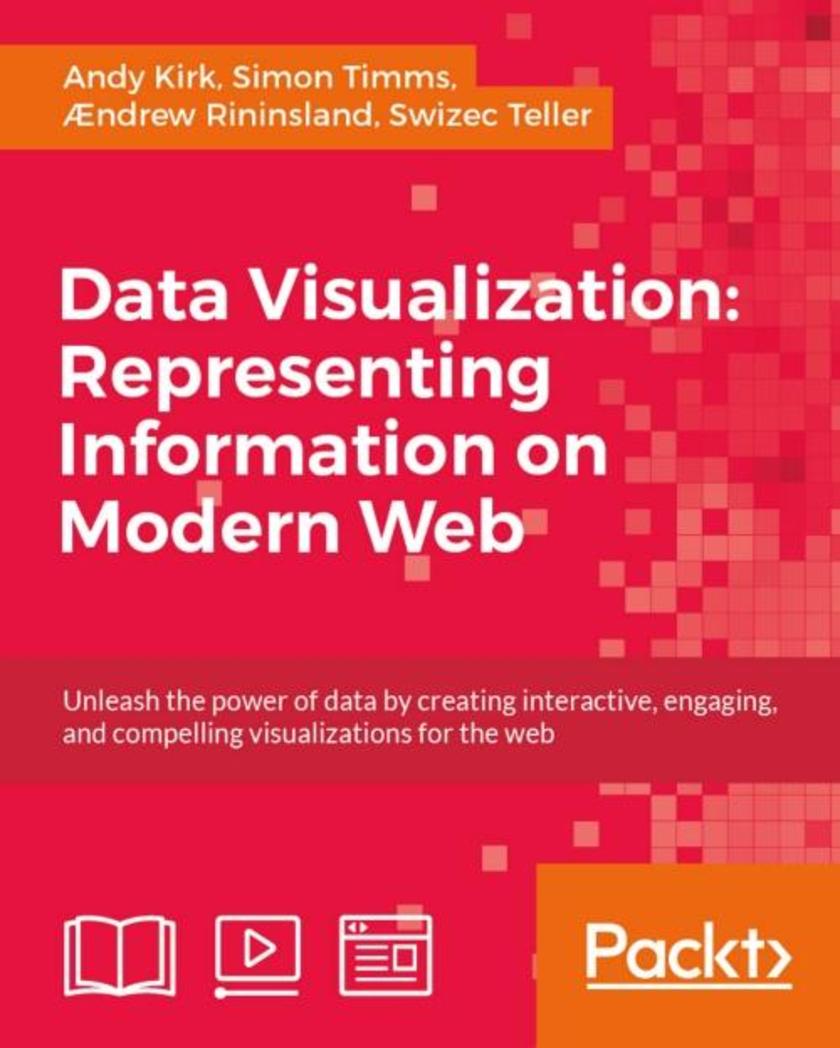
Data Visualization: Representing Information on Modern Web
¥179.84
Unleash the power of data by creating interactive, engaging, and compelling visualizations for the web About This Book Get a portable, versatile, and flexible data visualization design approach that will help you navigate the complex path towards success Get thorough explanation of the many visual variables and visualization taxonomy to provide you with a menu of creative options A comprehensive and contemporary introduction to data-driven visualization design and the most effective approaches to designing impact-maximizing and cognition-amplifying visualizations Who This Book Is For This course is for developers who are excited about data and who want to share that excitement with others and it will be handy for the web developers or data scientists who want to create interactive visualizations for the web. Prior knowledge of developing web applications is required. You should have a working knowledge of both JavaScript and HTML. What You Will Learn Harness the power of D3 by building interactive and real-time data-driven web visualizations Find out how to use JavaScript to create compelling visualizations of social data Identify the purpose of your visualization and your project's parameters to determine overriding design considerations across your project's execution Apply critical thinking to visualization design and get intimate with your dataset to identify its potential visual characteristics Explore the various features of HTML5 to design creative visualizations Discover what data is available on Stack Overflow, Facebook, Twitter, and Google+ Gain a solid understanding of the common D3 development idioms Find out how to write basic D3 code for server using Node.js In Detail Do you want to create more attractive chartsOr do you have huge data sets and need to unearth the key insights in a visual mannerData visualization is the representation and presentation of data, using proven design techniques to bring alive the patterns, stories, and key insights that are locked away. This learning path is divided into three modules. The first module will equip you with the key techniques required to overcome contemporary data visualization challenges. In the second module, Social Data Visualization with HTML5 and JavaScript, it teaches you how to leverage HTML5 techniques through JavaScript to build visualizations. In third module, Learning d3.js Data Visualization, will lead you to D3, which has emerged as one of the leading platforms to develop beautiful, interactive visualizations over the web. By the end of this course, you will have unlocked the mystery behind successful data visualizations. This Learning Path combines some of the best that Packt has to offer in one complete, curated package. It includes content from the following Packt products: ● Data Visualization: a successful design process by Andy Kirk ● Social Data Visualization with HTML5 and JavaScript by Simon Timms ● Learning d3.js Data Visualization, Second Edition by ?ndrew Rininsland and Swizec Teller Style and approach This course includes all the resources that will help you jump into creating interactive and engaging visualizations for the web. Through this comprehensive course, you’ll learn how to create engaging visualizations for the web to represent your data from start to finish!




 购物车
购物车 个人中心
个人中心



